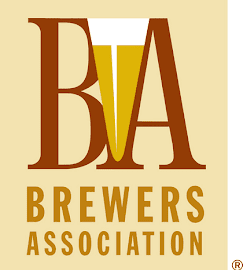In the mid 1990s, I was the original brewer for the Manayunk Brewery, a brewpub in Philadelphia.
Rich Pawlak —a freelance writer and, at the time, a newly converted good beer fan— stopped in to talk one afternoon.
Rich had been intrigued that the brewpub was listing beer pairings for the food items on the menu. That might be common now, but it was not then.
Over pints, afternoon became evening. We went on to discuss other beer with food pairings. One was Indian cuisine.
We both agreed that the international style lagers normally served at Indian restaurants might be a good wash with the food's aromatics and spice, but that a hefe-weizen (a German-style wheat beer), with its sweet food-spices notes (cloves, allspice, banana, etc.), would be a complimentary flavor mate.
German and Indian: call it international food diplomacy.
Our discussion was wide-ranging: The brewpub neither served Indian cuisine, nor was I brewing a wheat beer.
I lost touch with Rich in the intervening years, so I was happy to hear of him thriving, and that he had begun a blog he calls The Omnivore.
In a recent post, Rich lists some beer and food pairings, but omits the dahl-with-weizen we had discussed. I'll remind him.
Brewer Garrett Oliver, in his book The Brewmaster's Table, has written similarly of this flavor 'hook':
Many of the spices of Indian cooking are mirrored in the spiciness of weissbier.
Yet to this day, it remains out of the ordinary to find a hefe-weizen at an Indian restaurant.
The 5th and final beer of the presentation was Hang Ten, a "Weizen Dopplebock," brewed once a year by the Clipper City Brewing Company of Baltimore, Md.
Most German-style wheat beers have an alcohol level of about 5% by volume, give or take. A weizen doppelbock, such as Aventinus from Schneider of Germany amplifies that to about 8%; the Hang Ten to 10%.
With this increase in alcohol comes a bigger shake of clove and allspice characters, an infusion of dark plums, some vanilla and white chocolate, and healthy dollops of banana and cherry fruit essence. None of these items are tossed into the beer; it's the fermenting yeast that provides the flavors.
For the evening presentation, I had paired the weizen dopplebock with chocolate.
But remembering that long-ago conversation, I paired the beer not just with any chocolate, but with one from local chocolatier, Kingsbury: a Garam Marsala-infused dark chocolate.
The combination was flavor affinity cubed, and it was delicious.
- More on the presentation here.
- More on beer-with-chocolate here.
- Caveat lector: I am employed by a northern Virginia wholesaler that sells Clipper City beers.










'lead' a discussion, that's meaningless. many can do that, really.
ReplyDeletei doubt it was eventful. since the beer on topic is run of the mill.
Thanks for commenting, and thanks for reading my blog. I'm sorry that you find the particular beer is run-of-the-mill, but your review entirely misses the point of the exercise: pairing of the two foodstuffs to create something new. As to your comment that my leading of a discussion was a meaningless exercise because many others could do that: it seems more of a barbed insult towards me than an observation. That many can do something does not make that action meaningless.
ReplyDelete